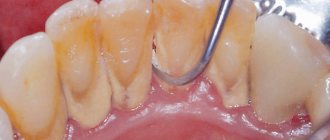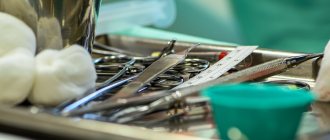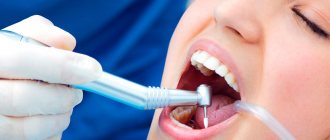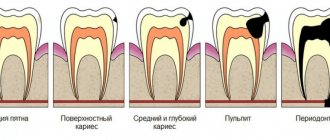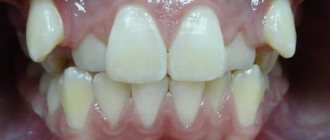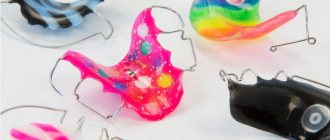Good day!
My name is Khalisat Suleymanova - I am a herbalist. At the age of 28, I cured myself of uterine cancer with herbs (read more about my experience of recovery and why I became a herbalist here: My story). Before being treated using traditional methods described on the Internet, please consult with a specialist and your doctor! This will save your time and money, since the diseases are different, the herbs and treatment methods are different, and there are also concomitant diseases, contraindications, complications, and so on. There is nothing to add yet, but if you need help in selecting herbs and treatment methods, you can find me at my contacts: Khalisat SuleymanovaInstagram page: instagram.com/fitoterapevt1
Telephone: 8
Email: [email protected]
I consult for free.
Lincomycin is a powerful drug that is used to treat many infectious diseases. The main active ingredient is a natural antibacteriostatic substance. When using Lincomycin, can you drink alcohol and what can this mean for the body?
Drug overdose
This medicine is antimicrobial and antiparasitic, in other words, an antibiotic.
This medicine is antimicrobial and antiparasitic, in other words, an antibiotic. Lincomycin is quite effective in its action and is a broad-spectrum drug. Lincomycin is usually prescribed for infectious lesions of the joints and skeletal system, arthritis, pharyngitis, otitis media, bronchitis, etc. No fatal cases of lincomycin overdose have been recorded. If you follow the dosage, there will be no serious consequences. However, if you neglect the dosage, then candidiasis infection or colitis may develop. If such a problem occurs, you should immediately stop taking the medicine and consult a doctor.
Features of taking "Lincomycin"
The attending physician prescribes the drug "Lincomycin" in the presence of inflammatory processes in joint, muscle and bone tissue, as well as in infectious diseases of the respiratory tract.
These include:
- mastitis (inflammation process in the breast);
- bone and joint infection (arthritis);
- damage to the cardiovascular system;
- problems with the oral cavity (the onset of the inflammatory process after tooth extraction, gum damage);
- skin diseases (furunculosis, wound infection, complications after surgery);
- sepsis (inflammation that began after the infection spread through the bloodstream);
- diseases of the respiratory system (pneumonia, bronchitis, purulent pleurisy).
Most often, the medicine is prescribed for diseases caused by parasites and microorganisms.
Interaction between alcohol and lincomycin.
The interaction of alcohol, even beer, with lincomycin can lead to adverse effects:
- During illness, a person has a very weak immune system. Frequent drinking only worsens the situation, thus making the illness last longer and more severe, and sometimes even lead to complications;
Even beer with lincomycin can lead to adverse effects
- Antibiotics are processed by the liver, and if you add alcohol, the load increases significantly. Enzymes do not have time to process everything, and ethanol begins to accumulate in the body. If continued in this manner, it can lead to liver failure and, in some cases, death.
- It's no secret that alcohol reduces the effect of any medicine.
- Including lincomycin. It is worth taking medications on an empty stomach to increase absorption into the body. Alcohol reduces or neutralizes the effect of the antibiotic, which leads to complications of treatment and new side effects.
- Do not forget that alcohol increases all the side effects of the medicine many times over.
- Antibiotics in interaction with alcohol lead to disorders of the nervous system.
Important! Even a glass of beer drunk at the same time as antibiotics can lead to serious consequences!
conclusions
Lincomycin is an antimicrobial drug with a strong antibacterial effect. Typically, this drug is taken when other drugs have not brought the desired therapeutic effect. It is quite highly effective, but it can also cause negative side reactions that can lead to unnecessary consequences. The interaction of alcoholic beverages and Lincomycin may increase the side effects of the drug, as well as reduce its effectiveness, which may result in a prolonged course of the disease and unforeseen complications. Thus, during antibiotic treatment, it is better to avoid alcoholic beverages.
Possible consequences of combination
The biggest danger of mixing alcohol and antibiotics is that the medicinal properties are neutralized
The biggest danger of mixing alcohol and antibiotics is that the medicinal properties are neutralized. The drug is poorly absorbed when drinking alcohol and is eliminated much faster. Drinking large amounts of alcohol can lead to the following symptoms:
- nausea and vomiting;
- headache;
- general weakness;
- stomach upset.
Important! When alcohol and antibiotics are combined, immunity is significantly reduced.
Side effects of mixing lincomycin with alcohol: In addition to general poor health, vomiting and nausea, stomach pain, rashes, diarrhea or constipation may occur.
Which antibiotics are best not to combine with alcohol?
You should not take risks and drink alcohol during treatment with erythromycin, tetracyclines and fluoroquinolones, as a number of studies confirm that ethanol weakens their effect.
It is also important to take into account the fact that metronidazole and tinidazole enter into a chemical reaction with alcohol and increase its toxic effect on the liver. The data on this matter, however, is quite contradictory, but is it worth the risk?
Some representatives of the cephalosporin group (cefoperazone, cefamandole, cefotetan and others) slow down the breakdown of ethanol, thereby provoking a disulfiram reaction. These drugs block enzymes that promote the breakdown of acetaldehyde, which eventually accumulates in the body and provokes headache, nausea, tachycardia, shortness of breath, convulsions and other unpleasant symptoms.
A similar reaction, according to some data, can also be provoked by biseptol, chloramphenicol, furazolidone, chloramphenicol, which, however, have not been used so often lately. The combination of alcohol with antifungal agents and ampicillin is dangerous.
Taking alcohol and some antibiotics can not only negate all therapy, but also cause harm
Alcohol and fluoroquinolone antibiotics
Fluoroquinolone antibiotics should not be taken with alcoholic beverages. These antibiotics include medications that contain certain active ingredients:
| Active substance | The most popular drugs that contain the specified active ingredient |
| Gatifloxacin | Zarquin, Zimar |
| Grepafloxacin | Raksar |
| Levofloxacin | Glevo, Levolet, Oftaquix, Signicef, Tavanik, Flexid, Floracid, Eleflox |
| Lomefloxacin | Lomflox |
| Moxifloxacin | Avelox, Vigamox |
| Norfloxacin | Nolitsin, Norbaktin, Normax |
| Ofloxacin | Zoflox, Ofloxin, Floxal |
| Perfloxacin | Abaktal |
| Pipemidic acid | Palin |
| Sparfloxacin | Sparflo |
| Ciprofloxacin | Tsiprinol, Tsiprolet, Tsipromed, Tsifran |
Why can’t you combine such drugs and alcohol? If a person drinks alcohol and takes antibiotics of this group, there is a risk of significant depression of the central nervous system, and in advanced cases the victim may fall into a coma. A distinctive feature of the group of fluoroquinolones is that they are artificial in origin without a natural analogue. All other antibiotics are either of natural origin or are laboratory-synthesized analogues. Thus, these antibiotics and alcohol have zero compatibility.
The instructions for antibiotics may not contain a ban on taking the drug with alcohol. Thus, the instructions for Ciprofloxacion contain information that if the central nervous system is damaged, the likelihood of unpleasant health consequences increases significantly. And alcohol leads to damage to the central nervous system.
According to toxicologist S. Radchenko, he observed many times how the “Pagliaccio” symptom appears and develops, when half of the face is white, half is red. This indicates damage to the nuclei of the facial nerve and many other dangerous consequences. Cerebral edema often occurs; in this condition, a person can die.
The specialist observed a similar symptom in those people who drank alcohol while taking Tarivid and Lomifloxacin.
At the same time, it is not recommended to take alcohol with other antibiotics of this group. The difference between the drugs is insignificant. The risk of severe consequences increases if a person is treated with combination drugs. Thus, preparations such as Tsifran ST contain an imidazole derivative. Such products are not compatible with alcoholic beverages.
Alcohol and aminoglycoside antibiotics
Alcoholic drinks and aminoglycoside antibiotics cannot be combined.
| Active substance | The most popular drugs that contain the specified active ingredient |
| Amikacin | Amikacin sulfate, Selemicin |
| Gentamicin | Garamycin, Gentamicin sulfate, Gentamicin ointment |
| Kanamycin | Kanamycin acid sulfate |
| Neomycin | Polygynax, Neomycin acid sulfate |
| Netilmicin | Netromycin |
| Spectinomycin | Kirin |
Attention! If you do not see your drug in the products listed above, study the instructions for the antibiotics. Look for the words "alcohol", "ethanol". If the instructions state that the drug is not compatible with ethanol, then drinking alcoholic beverages when prescribing such a drug is prohibited.
Alcohol should not be taken with these antibiotics, as the effects of alcohol are likely to increase side effects. However, aminoglycosides are currently practically not prescribed - they are taken only in severe situations.
Such funds were developed by specialists before anyone else. They have a toxic effect and, compared to modern means, act on the body too harshly. If modern means help the immune system in its independent fight against bacteria, then aminoglycosides themselves destroy them. Experts prescribe such drugs when the human body is so weakened due to an advanced infectious disease that it cannot fight bacteria even with the help of supportive medications.
What else are antibiotics not compatible with?
However, the matter is not limited to just abstaining from alcohol while taking antibiotics. An important role is also played by what other medications a person takes and even what to wash down the medicine taken with.
So, for example, drinking a glass of milk along with an antibiotic tablet or eating a piece of cottage cheese casserole can negate all the benefits of the drug. The worst combinations with dairy products are penicillins and tetracyclines, which form stable chelate complexes with calcium. But taking erythromycin with milk is quite acceptable.
Antibiotics should not be combined with tea, coffee, lemonade, fruits and fruit juices, as well as dishes that contain vinegar.
You need to take the antibiotic strictly according to the instructions at regular intervals. If the matter is not limited to taking one drug, it is important to make sure that the drugs do not conflict with each other. A qualified doctor, of course, will not prescribe incompatible drugs, but he may not know that you are currently being treated by another specialist and are taking the pills prescribed by him.
For example, cholestyramine and enterosorbents taken simultaneously with antibiotics reduce the absorption of the latter. Taking erythromycin while taking oral contraceptives can lead to intrahepatic cholestasis, and some antibiotics can reduce the effectiveness of oral contraceptives.
Cephalosporins are dangerous to combine with thrombolytics due to the risk of bleeding, and macrolides and fluoroquinolones can enhance the toxic effect of theophylline.
Combining alcohol and a number of drugs can be fatal
Length of time after administration
To prevent the risk of dangerous side effects, it is necessary to stretch the period between taking antibiotics and alcohol as much as possible. The body tolerates taking antibiotics quite hard; these drugs have a lot of side effects even without drinking alcohol. And if a person simultaneously “finishes off” the body with alcohol, then the likelihood of side effects and their severity increases significantly.
If a person is being treated for a serious illness, then he is advised to refrain from drinking alcoholic beverages - antibiotics and alcohol are incompatible in this case.
Antibacterial drugs are often hepatotoxic—taking them can negatively affect the liver. If you drink alcoholic beverages, the risk of such unpleasant consequences for the liver increases.
In order to reduce the load on the liver, you need to:
- take medications exclusively with water;
- do not smoke or drink alcohol during the treatment period;
- inform your doctor about reactions to medications;
- take medications only as prescribed by a doctor, without self-medicating;
- if a specialist has prescribed a hepatotoxic drug, use it exclusively according to the instructions;
- Get tested regularly if necessary.
Side effects of Lincomycin
The antibiotic has side effects. Such phenomena are especially pronounced with the simultaneous use of Lincomycin and alcohol. The following symptoms may be observed:
- dyspepsia (nausea, vomiting, diarrhea, stomach pain);
- allergies (urticaria, anaphylactic shock, itchy skin, rash);
- formation of edema;
- headache, dizziness, high blood pressure;
- muscle weakness;
- enterocolitis caused by anaerobic microbes (pseudomembranous colitis);
- changes in the general blood test (decrease in the number of leukocytes and platelets);
- with long-term use, a fungal infection (candidiasis) may develop.
Currently, cases of acute overdose of this antibiotic have not been studied. With long-term use of the drug, the development of pseudomembranous colitis and fungal infection is possible.
How do Lincomycin and alcohol interact in the body?
Can I drink alcohol while taking Lincomycin? Ethyl alcohol does not enter into a direct chemical reaction with Lincomycin. However, taking an antibiotic and alcohol at the same time is strictly prohibited. There may be indirect consequences of this combination, which are associated with the exchange of alcohol and Lincomycin in the human body.
The absorption of Lincomycin and its therapeutic effect largely depend on food and drink intake. If a person takes an antibiotic before eating, then about one-third of the medicinal substance will be absorbed. If you take a Lincomycin tablet after a heavy meal, the absorption of the antibiotic will be only 5%. Since alcohol is usually taken with large amounts of food, the absorption of antibacterial drugs is noticeably reduced.
But this is only one of the negative consequences of taking Lincomycin together with alcohol. There may be other negative effects on the body associated with the effect of alcohol on the immune system and the liver.
Joint reception
Is it possible to drink alcohol with Lincomycin? Everyone knows that taking antibiotics and alcohol at the same time is prohibited. Most often, doctors explain this by saying that as a result, the effect of the drug significantly worsens. But such a combination is dangerous on a deep, cellular level.
The interaction of ethanol derivatives and antimicrobial drugs leads to calcification of some tissues. Due to dehydration, cells cannot metabolize calcium ions at the required rate, which leads to membranes hardening to the point of complete obstruction.
Consequences of drinking alcohol with Lincomycin
A patient taking antibiotics should not drink not only strong alcohol, but even weak alcoholic drinks (beer, cocktails). This is due to the following points:
The compatibility of alcohol and Lincomycin may be accompanied by diarrhea and constipation
- During an infectious disease, a person's immunity is reduced. Alcohol can further weaken the body's defenses. As a result, antibiotic treatment loses its meaning, and it becomes difficult for the body to fight the disease. The disease occurs with more severe symptoms and sometimes leads to complications.
- Alcohol significantly weakens the effect of the antibiotic. This drug is taken on an empty stomach. Drinking alcohol nullifies the entire therapeutic effect of Lincomycin. Drinking alcohol leads to rapid removal of the drug from the body; the drug does not have time to accumulate in sufficient quantities in the blood. Due to the negative effects of alcohol, the elimination of the antibiotic is accelerated by approximately 2 times.
- Both antibiotics and alcohol are processed in the liver. This means that taking alcohol and Lincomycin together creates a high load on the liver. It is difficult for the body to cope with such a load; the liver begins to process alcohol poorly. In severe cases, this can lead to liver failure and even death. This is especially true for patients who already have chronic liver diseases.
- If you drink alcohol in excessive quantities, it leads to poisoning and vomiting. As a result, the antibiotic is removed from the body and the therapeutic effect is significantly reduced.
- Alcohol can lead to significant side effects from the antibiotic. Skin rash, nausea, vomiting, constipation, or diarrhea may occur.
Characteristics of the drug
The medicine belongs to the category of antibacterial drugs with a wide range of action. It is used when other medications have not helped. The active substances have good absorption - more than 50%. If you take a medicinal product before meals, then its absorption is 1/3 of the medicinal product, after - 5%.
Almost all of them react with plasma proteins and enter the body’s tissues through the blood system. Therefore, pathogenic microorganisms are quickly suppressed. The following infectious diseases are treated with the drug:
- organs of the musculoskeletal system;
- respiratory organs;
- skin pathologies;
- diseases of the cardiovascular system;
- dental manifestations;
- mastitis and sepsis.
Contraindications:
- renal and hepatic pathology;
- pregnant women and lactation;
- children up to six years of age.
- allergies.
The following medications are contraindicated during treatment:
Simple ways to treat complex diseases:
Horseradish is the only plant that can draw salt through the pores of the skin. Do it - you won't regret it! Horseradish leaves will help get rid of all the salt that has accumulated in the body and can lead to painful salt deposits...Check... Read more
Never give an antibiotic BEFORE you get a blood test with a leukemia formula. Remember, write to yourself somewhere in a visible place!!! INCREASED leukocytes, ESR, lymphocytes - VIRUS. INCREASED leukocytes, ESR, segmented and rod neutrophils... Read more
What 1 glass of this drink will do to your liver can be called a real miracle! If the liver is overloaded or does not work well, we immediately feel it. Weakness, lack of energy, dizziness, nausea, pain in the right hypochondrium, problems with food... Read more
Dandelion is the elixir of life, and what a medicine!!! The medicinal dandelion is an unpretentious plant, but contains a good half of the chemical elements of the periodic table. Sodium, potassium, manganese, magnesium, and... Read more
Seeds that repair tendons and reduce joint pain. We treat osteoporosis and osteoarthritis. Osteoarthritis of the knee is a type of degenerative joint disease or arthritis that is localized in the knee and can cause pain and di... Read more
- laxatives that promote the release of active substances from the body;
- drugs of the penicillin class and for inhalation of anesthesia;
- non-steroidal anti-inflammatory drugs.
INTERESTING fact: Can Mildronate be taken with alcohol?
How long after treatment can you drink alcohol?
If the patient is being treated with antibiotics, then alcohol should be completely avoided throughout the entire therapy. After completing the course of treatment, alcohol can be taken only after 8-12 hours. This is the minimum period of time that must pass after taking the last dose of the medicine. In some cases it is necessary to wait a longer period. For example, with liver and kidney disease, the elimination of the drug slows down, and it may be necessary to abstain from alcohol for a longer period after the last dose of the drug.
Under no circumstances should you take Lincomycin with alcohol. This can lead to very serious side effects. It happens that a person has already drunk alcohol, and after some time there is a need to take Lincomycin. For example, in case of unexpected toothache and gumboil formation. Here you need to wait until alcohol is completely eliminated from the body, and only then take an antibiotic. The period of alcohol withdrawal depends on many factors: the amount of alcohol, the weight and age of the person. For example, if a person of average weight drank a glass of light wine (about 100 g), then Lincomycin can be taken after 2 hours.
If a person abuses alcoholic beverages, then there is no point in taking Lincomycin. In this case, the therapeutic effect will not appear, and the therapy will not lead to the desired result.
Interaction
Lincomycin and ethanol do not react in any way with each other.
Therefore, it is possible to drink a little alcohol while taking an antibiotic. However, higher doses of alcohol can have an indirect effect on the entire healing process. The drug is very sensitive when taken simultaneously with food and drinks. When administered on an empty stomach, up to 30% of the dose of the active substance is absorbed, resulting in its therapeutic concentration in the blood. However, when taken after meals, absorption is less than 5%.
Alcohol is usually not drunk on an empty stomach, so the absorption of the drug when combined with alcohol will be reduced. In addition, ethanol damages liver cells, and it is in this organ that Lincomycin is metabolized. Against this background, it is possible to accelerate the elimination of the drug from the body by 1.5 or even 2 times.
Short description
This is an antibiotic prescribed for the treatment of infectious lesions of the respiratory system, inflammation in muscle tissue, bone structures, and joints.
The main active substance of the product is effectively used to eliminate the following pathologies:
- mastitis - an inflammatory process in the mammary gland;
- arthritis – infection of joints and bones;
- diseases of the cardiovascular system of a bacterial nature;
- inflammation in the oral cavity;
- skin diseases - boils, infection of lesions, complications after surgery;
- sepsis due to blood poisoning;
- pneumonia, purulent pleurisy, bronchitis.
Almost always, an antibacterial drug is prescribed for diseases caused by pathogenic microorganisms and parasites.
There is no need to take the medicine during pregnancy or if you are hypersensitive to the components. Contraindications also include renal failure and children under 6 years of age.
Like any antibiotic, the medicine often causes side reactions such as nausea with vomiting, headache, bowel dysfunction, rash, muscle weakness, and increased blood pressure. If you do not take the tablets with enough water, the stomach lining will become irritated.
Complications
If the capsules are taken together with alcohol, the following adverse reactions develop:
- Nausea, vomiting.
- Abnormal stool in the form of constipation, diarrhea.
- Pain syndrome in the abdominal cavity.
- Rash, red spots on the skin.
- Migraine.
- Increased blood pressure.
- Swelling.
- Dizziness, fainting.
- Muscle weakness.
- Anaphylactic shock.
Exceeding the permissible dose of alcohol negatively affects the therapeutic effect, reduces the protective properties, which delays the elimination of the infection.
More serious consequences include inflammation of the inner lining of the heart as a result of the activity of bacteria resistant to the drug due to regular consumption of ethanol.
Since breakdown occurs in the liver, the increased load on the organ causes jaundice, which can be fatal. Combination with alcohol accelerates the reduction of leukocytes, develops leukopenia, and aggravates the symptoms of infectious pathology.
Use for chronic addiction
Alcoholism and antibacterial drugs are incompatible things. Treatment for this combination will not be effective. If you follow strict mixing rules and drink no more than 50 g of a quality drink, you can avoid negative complications.
However, regular alcohol abuse not only neutralizes the entire therapeutic result, but also seriously burdens the body, which already suffers from infectious pathology if the drug was prescribed. Therefore, it is better to completely abstain from alcohol during the course.
Use for intoxication
Since a hangover is a state of alcohol poisoning, taking antibacterial tablets in this case is prohibited.
If you feel unwell (nausea with vomiting, dry mouth, headache, dizziness, general weakness, diarrhea), you need to call an ambulance so that specialists can install a drip to speed up the removal of acetaldehyde from the blood and support the heart and liver.
If you also take medicine in this state, the load on the body will only increase, and there will be no detrimental effect on the infection due to the minimal absorption of the medicine. Therefore, you need to wait until ethanol is completely excreted in the urine.
Is it possible to drink alcohol with antibiotics?
Drinking alcohol is not recommended in large quantities. Causes:
- This is a poison that poisons the body. It interferes with recovery and therapy. The situation worsens, leading to disorders. Poisoning and others contribute to organ deterioration.
- Depriving the body of something useful. The person does not receive nutritional components. Cell absorption deteriorates. They lose oxygen, blocking the distribution of drugs in the blood.
When alcohol interacts with antibiotics, the concentration of substances decreases. The disposal of poisons and waste is slowed down. This leads to poisoning. It is difficult to cure at home. There are following recommendations for combination:
- Co-administration promotes unintended consequences. It is recommended to wait three days before consuming alcoholic compounds. Then all harmful products will be removed from the body, which reduces reactions.
- Tablets or injections are used with wine according to medical research. Scientists do not exclude negative manifestations from abuse. Requires resource allocation internally.
- Some elements are allowed to be consumed. Some are better to avoid. Please read the instructions before starting the course. It describes the pharmacological effects.
Studies conducted on volunteers and animals have made it possible to establish what will happen if the drugs are taken together with alcohol. The result depends on the group and elements. For example, Ceftriaxone, Azalide and others block the action, enhance the effect of toxins, increasing the effect on internal organs. This causes more poisoning and decreased immunity.
The issue of compatibility arose in the 60s of the last century. In those days, they began to use antibiotics. Then we noticed the first reactions of patients:
- nausea, vomiting;
- diarrhea;
- rapid heartbeat, pressure changes;
- drowsiness;
- dizziness, pain;
- confusion of consciousness up to its loss;
- redness, allergic reactions;
- sweating
The clinical picture was similar to that suffered by people working in rubber manufacturing plants. Disulfiram was used during the work. After the shift, the workers relaxed with alcohol and went out of order, showing similar signs. After laboratory studies, scientists began to use a remedy to eliminate alcoholism. Patients developed intolerance, so they quit.
Through research, it was revealed that it is prohibited to combine vodka, beer and other things with such chemicals:
- Metronidazole. Manufacturers recommend not to use it for two days after completing the course. Then the toxic poisons are completely removed. During this time, it is prohibited to use alcohol-containing cough medicines, gargles, etc. Consequences are being observed in patients in clinics.
- Tinidazole. Used to eliminate infections, stomach upsets, or to remove pathogens. It acts according to a principle similar to metronidazole.
- Cephalosporins. They interact poorly with alcoholic drinks. Complications have been observed in people when administered intravenously using a drip in the hospital. It is recommended to avoid such combinations.
- Linezolid. Interacts only with fermented drinks: beer, sherry, wine. Increases blood pressure. Not recommended for people with hypersensitivity.
- Doxycycline. Side effects occur in chronic alcoholics who have high blood alcohol levels. It is not recommended for use by those who have liver problems.
Most antibiotic components have an adverse effect. There is a group of antibiotics that have no contraindications. These include amoxil, cephalexin, zithromax and some others. The instructions do not provide any comments regarding the interaction of the elements. Anti-cold alcohol-containing tinctures are used for therapy.
Studies confirming the danger of the combination have not been conducted. There are only observations and conclusions of doctors who deliberately did not investigate. Remember that together they damage the liver. The organ wears out faster and loses its function to utilize decay products. This causes serious side reactions that lead to complex disorders and deterioration of well-being. Some allergies can be fatal in severe cases.
Sources
- https://alkotraz.ru/alkogol-i-lekarstva/linkomitsin-s-alkogolem.html
- https://stop-alko.ru/stati/sovmestimy-li-antibiotiki-i-alkogol.html
- https://gobanket.ru/napitki/sovmestimost/mozhno-li-pit-alkogol-pri-prieme-linkomicina.html
- https://MyWeak.ru/alkogolizm/lekarstva/linkomitsin-sovmestimost.html
- https://alko-centr.ru/alkogol-i-antibiotiki/
[collapse]
